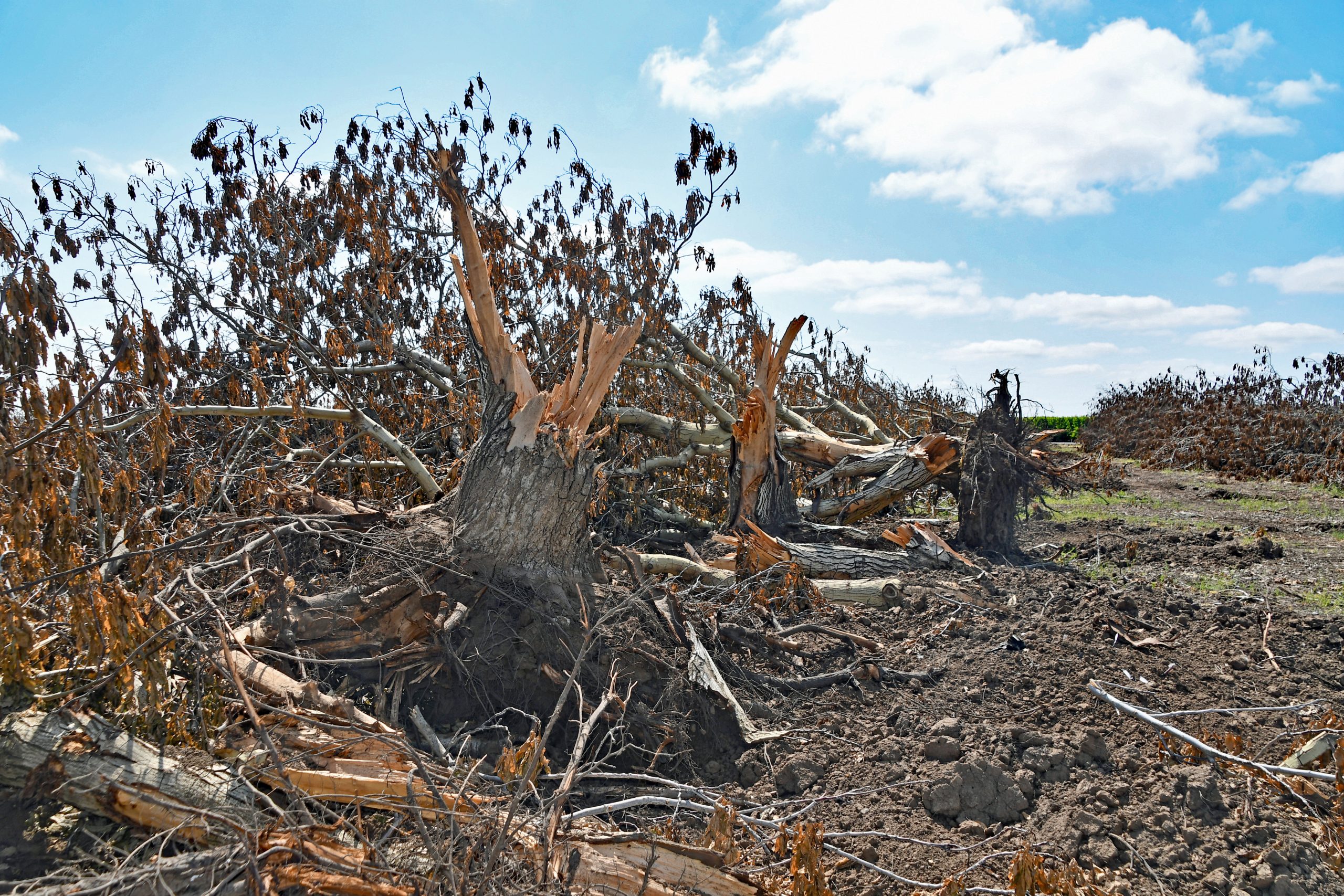By Vicky Boyd
Increasing interest rates, combined with rising crop input prices and often lower commodity prices, have conspired to put more pressure on many farmers’ bottom lines. Despite the perception, most banks haven’t tightened lending standards over the past few years and continue to look at five key factors when making loans, said San Joaquin Farm Bureau First Vice President Les Strojan.
“But the farmer has to be able to show his enterprise is going to be able to make money and pay the loan off,” said Strojan, who spent 31 years with the Farm Credit Bank before retiring as senior vice president of credit and chief credit officer. He and his son currently raise beef cattle and forage crops near Farmington.
John Primasing, Bank of Stockton chief credit officer, agreed, saying his institution continues to use the same lending criteria it has in the past. But some outside factors have changed, including declining commodity prices and increased production costs, that may affect a borrower’s ability to repay a loan.
“We’ll entertain any loan, but it has to work,” Primasing said. “The biggest challenge we have right now is commodity prices.”
He provided almonds as an example. The statewide average yield is 2,200 pounds per acre, with some handlers paying as much as $1.60 per pound including premiums. Under this scenario, the grower would gross $3,520 per acre, but production costs are about $3,750 per acre.
“So how does he make a mortgage payment with that?” Primasing said.
Faced with more expenses than income, some growers end up dipping into reserves to make up the difference.
Paul Sanguinetti, who farms tree and row crops with his sons near Stockton, said higher interest rates are just adding to their overall farming costs.
“Your income isn’t there, so now you have to have a credit line,” he said. “Every day they send you a notice that they’re raising your interest rate. You have to make that money somehow to pay that interest. With the interest rates, you have to make 8%, 9% or 10%. If the crop makes 10% all the time, we wouldn’t have to borrow any money.”
Sanguinetti pointed to walnuts, which he described as not just bad but terrible, as having one of the largest disparities between input costs and grower prices. His 30-year-old Vina walnut orchard is slated for removal.
Cheap money comes to an end
Like consumers and other businesses, growers became accustomed to interest rates that hovered near zero from 2008 until early 2022. In an effort to control inflation, the Federal Reserve began ratcheting up the benchmark borrowing rate to the current target range of 5.25% to 5%, the highest level in 22 years. Banks turn around and lend the money to businesses and consumers at a higher interest rate, with the difference being their profit margin.
Although the jump in interest rates sounds onerous because borrows grew used to “cheap money,” Primasing said it likely won’t have a huge impact on farmers’ profit and loss statements.
“It’s not as material as you might think it would be,” he said. “What’s really hurting their top line are the commodity prices.”
Banks and Farm Credit typically offer several different ag-related financing products, including production loans, operating lines of credit, term loans for equipment purchases, property improvement and development loans, and long-term ag real estate loans.
With production loans, for example, growers take them out before the start of the season to finance the cost of planting, growing and harvesting crops. They pay them off after harvest. Operating lines of credit are similar. They involve revolving debt that can be borrowed and paid back to fund day-to-day farming expenses like fertilizer, seed livestock and labor. Interest only accrues on the used funds.
Where Primasing said Bank of Stockton differs from some Farm Credit institutions is with its ag mortgage rates. Farm Credit typically issues variable-rate mortgages based on the prime lending rate.
For a 25-year mortgage note, Bank of Stockton charges a fixed rate for five years, then moves over to the market rate. This provides stability during the loan’s first five years when permanent crops may not yet be in production.
Because many Farm Credit mortgages have variable interest rates tied to the federal monetary policy, Strojan said some growers may be in for sticker shock when they receive their next statement.
“The mortgage loans mostly come in at the end of the year, and a lot of those people are going to get a jolt that the interest is going to be twice what it was last year,” he said. “Some of those operations aren’t going to be able to pay it.”
In March 2020, Strojan said mortgage loans were about 3.25%. Today, they’re about 8.5% or roughly a 160% increase.
Primasing said he hadn’t seen any growers default on loans, but he has had a couple sell out, which “was the right move for them.”
“So, so far so good, but as we continue down this path, it’s going to be a matter of time to see who can hang on long enough,” Primasing said.
He and Strojan agreed that the ag industry isn’t in nearly the dire situation it was in the 1980s, when interest rates were double digit and many farmers went bankrupt. In addition, many growers nowadays aren’t nearly as overextended as counterparts were in the 1980s. Today, they have larger reserves and more equity due to increasing land values.
“We don’t have the interest rates at that level,” Strojan said, referring to the 1980s. “We don’t have farmers paying 20%, 21% or 22% on their operating loans. It’s far different from that. We’re a long way from the devastation that occurred in 1986.
“On the other hand, we have a lot more capital out. It’s going to depend on how much resources the farmers have.”



